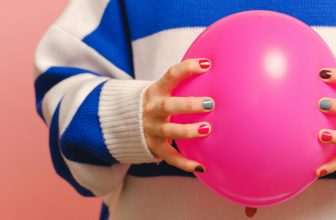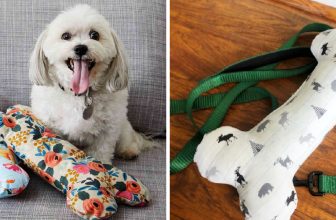How to Disinfect Toys Without Bleach
Toy disinfection is an important step in preventing the spread of germs, but many people don’t know how to do it correctly. Bleach is a common disinfectant, but it can harm children and pets. There are alternative methods that are just as effective as bleach-based disinfectants. This blog post will discuss the best ways on how to disinfect toys without bleach.
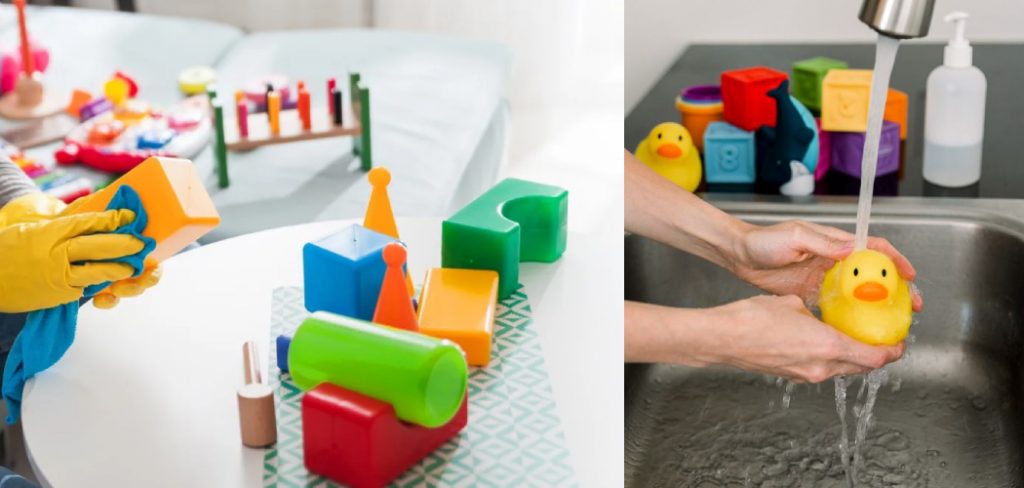
To keep your child healthy and safe, it is important to disinfect their toys regularly. However, using bleach can be harmful to both children and furniture. Here are some alternative methods that can be used to disinfect toys without using bleach. Read on for more information.
Why Should You Disinfect Toys Without Bleach?
The American Academy of Pediatrics (AAP) recommends that you clean and disinfect all toys regularly. This helps to remove any dirt, bacteria, or other germs that may be on the toys. You should also disinfect toys if someone in your household is sick. This will help to prevent the spread of illness.
Bleach is a powerful disinfectant that can kill many bacteria and viruses. However, it can also be harsh on toys. In addition, it can damage certain materials and cause them to break down over time. Therefore, it is important to know how to disinfect toys without bleach. Instead, you can disinfect the toys with other household cleaners or with natural solutions.
10 Smart Ways on How to Disinfect Toys Without Bleach
1. Using dishwasher:
Toy disinfection by using a dishwasher is one of the most recommended ways. The high-temperature water will automatically kill the bacteria and viruses present on the surface of the toys. You can place the toys in the utensil basket or on the top rack. But make sure to use a hot water cycle and avoid using any detergent.
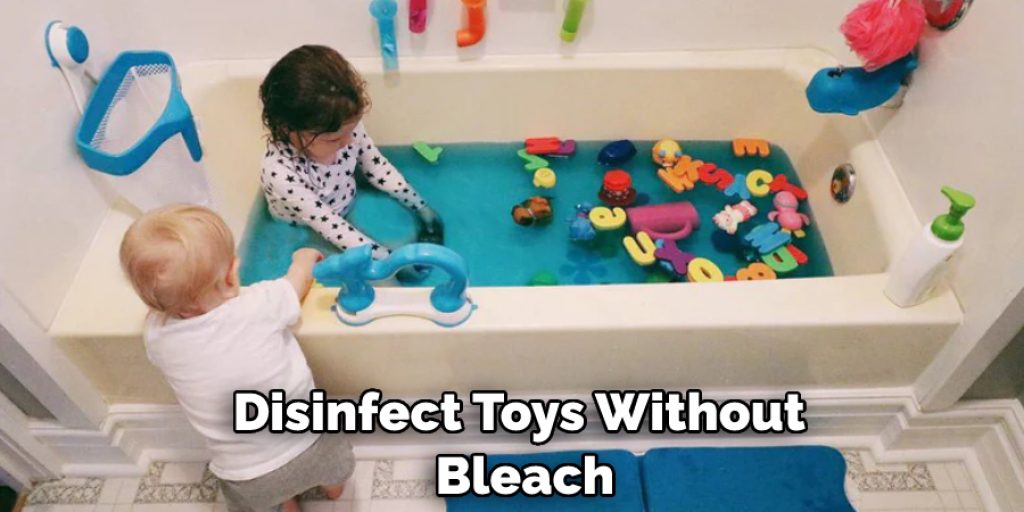
2. Using White Vinegar:
White vinegar is another excellent disinfectant that you can use to clean your child’s toys. Mix equal parts water and white vinegar in a bowl or spray bottle, and then use it to clean the toys as you would with any other cleaner. Be sure to let the toys air dry before giving them back to your child.
3. Making Your Disinfectant Wipes:
If you’re looking for a way to disinfect your child’s toys without using bleach, one option is to make your disinfectant wipes. This relatively simple process can be done with items you likely already have in your home. Ensure that the wipes you use are safe for your child’s toys. You can add vinegar to the solution if you want to use a stronger disinfectant. While this won’t work as well as the bleach, it will still get the job done.
4. Cleaning in the Washing Machine:
Cleaning your child’s soft toys in the washing machine is a great way to disinfect them without using bleach. Place the toys in a pillowcase or mesh bag and wash them on the hottest cycle possible. Be sure to let them air dry completely before giving them back to your child. If your washing machine doesn’t have a hot cycle, you can disinfect the toys by adding 1/2 cup of vinegar to the wash cycle.
5. Drying with a Hair Dryer:
If you don’t have time to wash your child’s toys in the washing machine, you can still disinfect them by using a hair dryer. Place the toy on a flat surface and use the hair dryer on a hot setting. Hold the dryer about 6 inches away from the toy and move it around so that all parts of the toy are exposed to the heat. The heat will kill any bacteria or fungus that is present on the surface of the toy.
6. Sanitizing with Alchohol:
Sanitizing your child’s toys with alcohol is a great way to disinfect them without using bleach. Instead, mix equal parts of water and alcohol in a bowl or spray bottle and use it to clean the toys as you would with any other cleaner. Be sure to let the toys air dry before giving them back to your child. If the toys are plastic, you can sanitize them by wiping them down with a cloth soaked in rubbing alcohol.
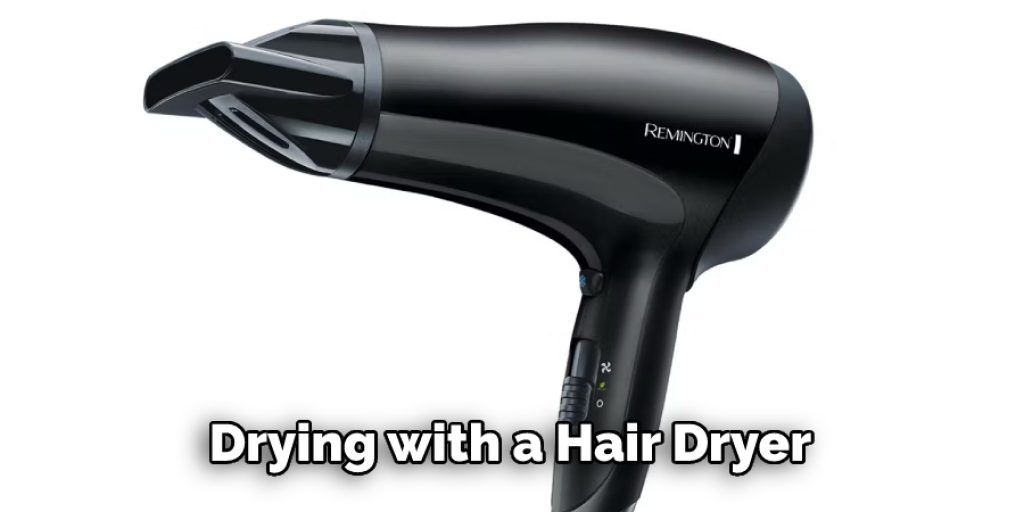
7. Using Hydrogen Peroxide:
Hydrogen peroxide is another great option for disinfecting your child’s toys. Mix equal parts of water and hydrogen peroxide in a bowl or spray bottle and use it to clean the toys as you would with any other cleaner. Be sure to let the toys air dry before giving them back to your child.
8. Washing With Your Hands:
If you don’t have time to wash your child’s toys in the washing machine, you can still disinfect them by hand. Simply fill a sink or basin with hot water and dish soap and clean the toys. Be sure to rinse them well and let them air dry completely before giving them back to your child. You should also ensure that your hands are cleaned before handling the toys.
9. Steam Cleaning on a Bowl:
You can still steam clean your toys if you don’t have a steamer. Simply boil water in a pot on the stove and hold the toy over the steam for a few minutes. The heat will kill any bacteria or germs present. Ensure the toy is not too close to the water, so it doesn’t get wet. If your toy is made of materials that can’t get wet, such as electronics, this method won’t work.
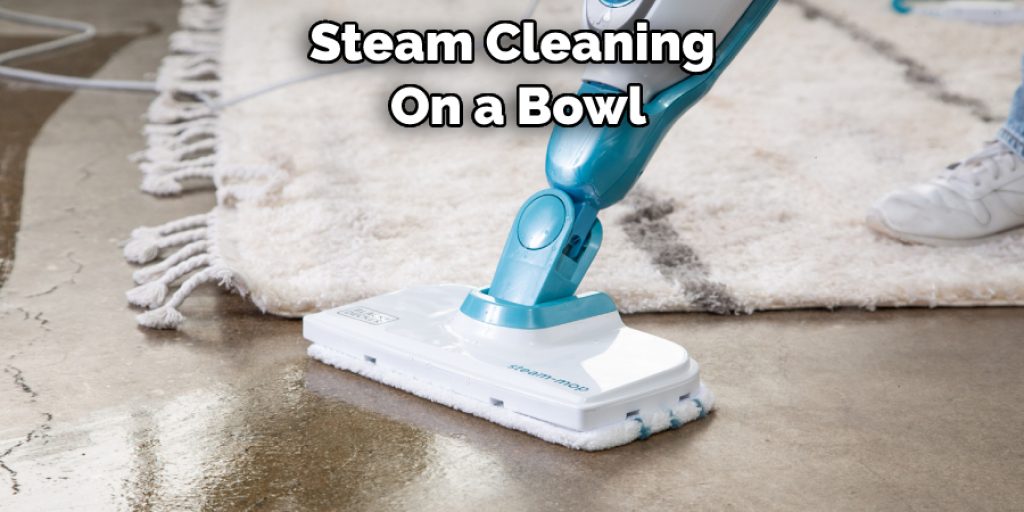
10. Surface Clean Electronic Toys:
You can use a slightly dampened microfiber cloth with rubbing alcohol to disinfect the hard surfaces of your child’s electronic toys. Be sure to unplug the toy and remove any batteries before starting. If your child’s toy is water resistant, you can disinfect it by wiping it down with a bleach solution. Make sure the toy is dry before giving it back to your child.
Additional Tips and Tricks
Here are some tips on how to disinfect toys without bleach:
- Use a vinegar and water solution. Combine equal parts vinegar and water in a spray bottle and use it to clean surfaces and disinfect toys.
- Always rinse toys after cleaning them with vinegar or any other cleaner to remove residue.
- Sanitize hard plastic or metal toys in the dishwasher. Place the toys on the top rack of the dishwasher and run them through a normal cycle.
- When using the above methods, rinse the toys with water after disinfecting them. This will help remove any residue that may be left behind.
- Toys that cannot be washed can be placed in the freezer overnight. This will kill any bacteria or viruses that may be present on the toy. Be sure to wrap the toy in a plastic bag before placing it in the freezer.
- If your child has a favorite toy that cannot be washed, consider keeping it separate from other toys. This will help prevent the spread of germs.
- Regularly clean and disinfect your child’s play area. This includes wiping down surfaces, washing stuffed animals, and vacuuming carpets.
- Inspect toys regularly for signs of wear and tear. Discard any toys that are broken or damaged.
Following these tips, you can clean and disinfect your child’s toys without using bleach. This will help keep them safe from harmful chemicals and bacteria.
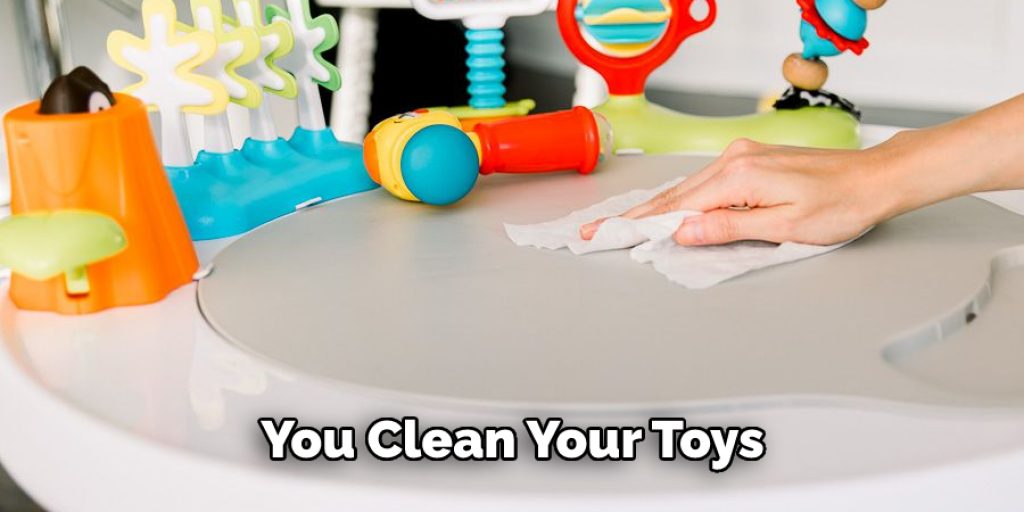
How Often Should You Clean Your Toys?
It’s important to clean your child’s toys regularly to help prevent the spread of germs and bacteria. Depending on how often the toys are used, you may need to clean them weekly, monthly, or even daily. Make sure you clean them thoroughly, using hot water and soap, and allow them to dry completely before storing them away. When cleaning your child’s toys, it’s important to use a gentle cleanser that won’t damage the toy.
Many people use bleach when cleaning their child’s toys, but this can damage the toy and make it more susceptible to bacteria. Instead of using bleach, opt for a natural disinfectant like white vinegar or vodka. These will kill any harmful bacteria without damaging the toy. If you’re using white vinegar, mix one part vinegar with four parts water. Spray the solution onto the toy and allow it to sit for a few minutes before wiping it clean with a damp cloth.
Final Thoughts
Toy disinfection is an important process to prevent the spread of germs and illnesses. Toys that many children share should be disinfected regularly. There are a few different ways to disinfect toys without bleach. Each has its benefits and drawbacks. The best way to disinfect toys may vary depending on the type of toy, how it will be used, and where it is stored.
It is important to clean and disinfect all types of toys, from stuffed animals to building blocks. We hope this guide on how to disinfect toys without bleach has been helpful. Your chosen method should be based on what is best for your family and your specific needs. If you have questions about toy disinfection, don’t hesitate to contact us; we would be happy to help.

